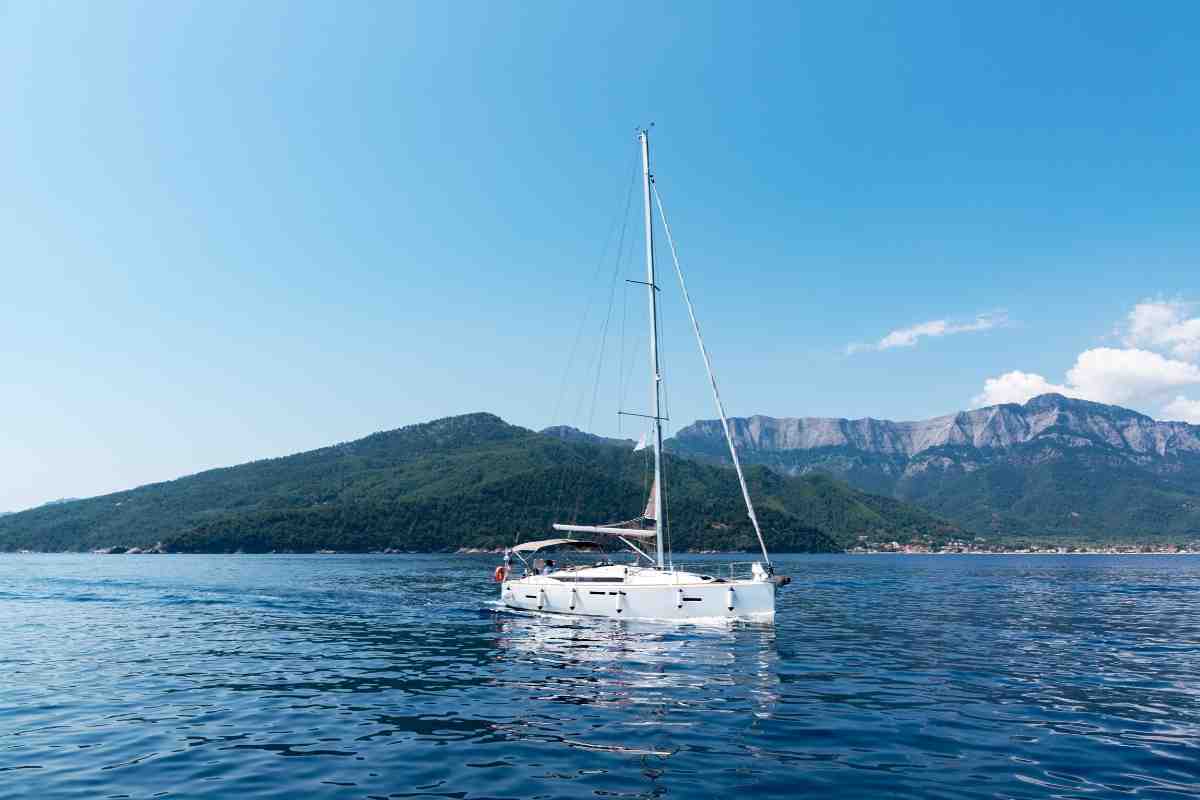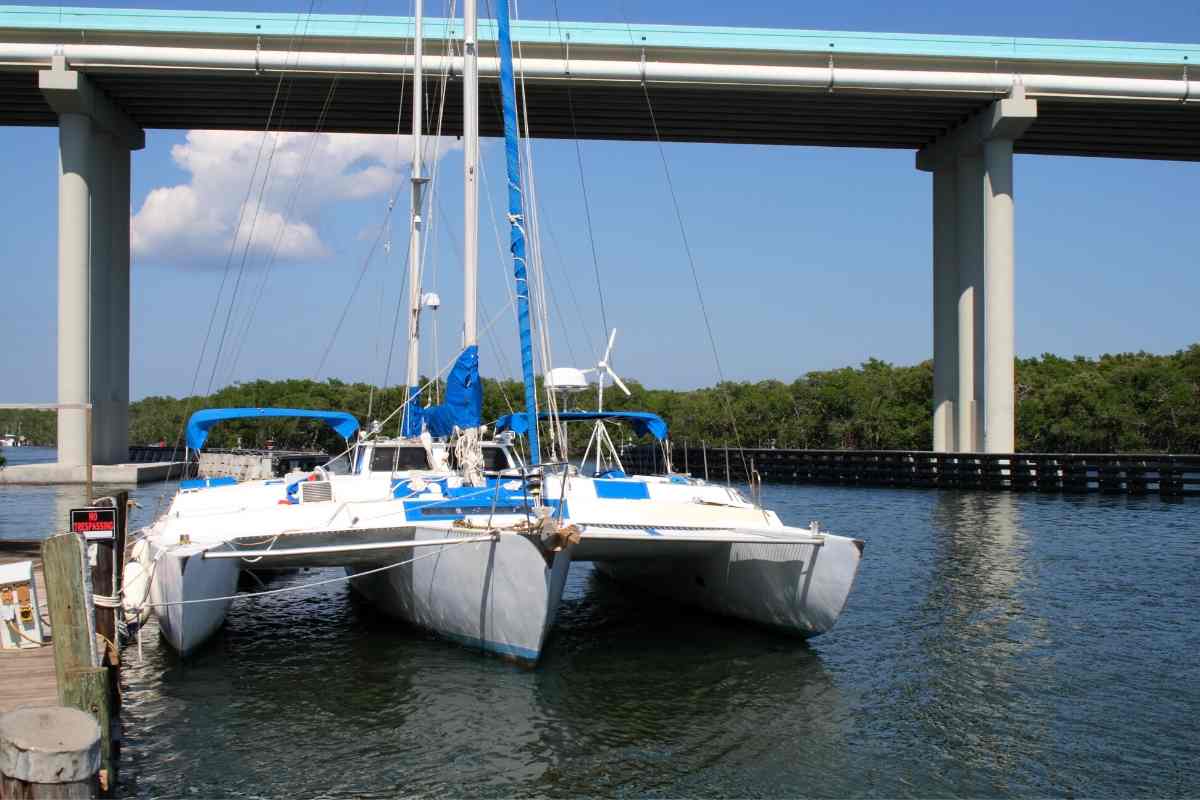How Big Of A Sailboat Do I Need For The Ocean?
Few images of sailing are more romantic than the thought of being out on the open seas with no land in sight and only your sails to power you and your good sense to guide you. Sailing on the open ocean can be a thrilling experience, but it can be dangerous with the wrong boat.
How Big Of A Sailboat Do I Need For The Ocean?
How big of a sailboat do I need for the ocean? The average sailor needs a boat that is at least 30 to 40 ft long to sail in the ocean. Transatlantic sails have been made on boats under 10 feet long, but the smaller the boat, the more dangerous the journey, and the more skilled the sailor must be.
Here is everything that you need to learn about how big of a sailboat you need for ocean sailing, as well as what other features to look for in an ocean-worthy sailboat.
What is the Right Size Sailboat for My Ocean Journey?
Choosing the right sized sailboat is a balance. You need a boat that is big enough to handle ocean waves and unpredictable inclement weather, but you also don’t want to end up with a boat that is too big for you to handle.
If you will be single-handing your boat or if you will be sailing with one other person, a boat of around 30 to 40 feet is a good balance.
A boat this size will enable you to handle ocean weather and waves, but it won’t be too hard to control alone or with a little bit of help, even if the weather is poor.
If you have a crew of three to six people, you can consider a boat up to 60 ft long.
Do You Really Need An Ocean-worthy Boat?
An ocean-worthy boat will cost considerably more than a boat designed for sheltered waters.
You’ll also make compromises in comfort, storage, etc. While it is enticing to dream of sailing across the Atlantic, the truth is that very few sailors ever take on such a journey.
If you just want to be able to go offshore every now and then, you don’t necessarily need a seaworthy boat.
Just be careful to check the weather and only take your boat out a few miles from shore, and you can enjoy being in the ocean regardless of whether your boat is seaworthy or not.
What Are The Downsides Of A Seaworthy Boat?
You may be wondering why you wouldn’t want a boat that you could take into the ocean if you wanted to. There are some critical downside to seaworthy boats.
If you aren’t confident that you will be making open-ocean journeys, it is best to choose a boat that is made for sheltered waters. Here are some of the downsides of a seaworthy boat:
- Cost. You will pay significantly more for a seaworthy boat than one that is designed for sheltered waters, per foot.
- Convenience. Seaworthy boats make compromises with your comfort to me be seaworthy, like higher sides and bow that may be frustrating when you are at a marina.
- Features. Seaworthy boats are designed with features that will benefit you on the open water, not features that make your life easy when you are anchored out.
What, Besides Size, is Important in a Seaworthy Boat?
Comfort
Spending days at sea sounds appealing, and it certainly can be, but having a boat that keeps you comfortable can make a big difference in whether you enjoy your ocean sails or not.
Remember, you won’t be able to plug into power or water out of a marina whenever you feel like it.

The ocean is almost never perfectly calm, so if you get sick on a boat that is continuously swaying and pitching, you may find yourself feeling nauseous a lot on your ocean trip.
Here are a few things to keep in mind to keep you comfortable on your trip.
- Level sailing. Monohull sailboat heel over when they are under wind, which means that your experience of sailing will be at an angle. On the other hand, multihull sailboats stay relatively stable regardless of wind speed or direction, which can create a much more comfortable ocean voyage.
- Energy production. If you’d like energy when you are out on the open water, you’ll need to make it yourself or use a generator. Solar panels are among the best ways to get the energy you need since sun is abundant out on the open water. Wind generators are another excellent option.
- Refrigeration. A cold drink can make the difference between a comfortable ocean voyage and a miserable one. Whether you use ice or you have electric refrigeration, look into ways to keep ice cool.
- Sun shielding. The sun is scorching out on the open water. Not only does it shine down from above with ferocity, but it also reflects off the surface of the water back onto you. You’ll need versatile sun-shielding and plenty of places to sit to get out of the sun.
Performance
Sailing across the ocean is a lot of fun, but most sailors would rather get there faster than dawdle. The open ocean can be a very dangerous place. Even if you have a seaworthy boat, you probably don’t want to be caught out in a storm.
The faster your boat is, the quicker you’ll make it across the ocean.
Here are a few things to keep in mind when choosing a boat that can perform in the ocean.
- How many hulls. Multihull sailboats generally sail about 25% faster than monohulls of the same length. They are especially adept at reaching upwind and maintaining speed. Multihulls can also handle rougher chop without causing you discomfort, so you may be willing to maintain a faster speed on a multihull in choppy seas.
- Sail carriage. Pretty much all ocean-worthy sailboats will have a mainsail and a jib sail. However, if you want your boat to perform its best, you may look for a boat that also offers additional sails. A boat that can be hooked up with a spinnaker enables you to make better time going downwind. A self-tending jib or another additional foresail can help you to make the most of every gust of wind that goes over your deck.
Loading capacity
If you’ll be sailing across the ocean, you’ll probably want to bring some things along. Sailboats that rely on a heavy ballast keel can generally handle being heavily loaded while still maintaining their seaworthiness since they rely on weight to keep themselves upright.
Monohull sailboats without a ballast keel and multihulls may respond less positively to loading. Loading will cause them to sit lower in the water, which may make it easier for them to take on water.
Safety
If you are sailing across the open ocean, safety is obviously one of the most important aspects of the boat that you choose. Not all seaworthy boats are equal in safety.
Here are some features to look for in a boat that will keep you safe on the open water, even in inclement weather.
- Unsinkable. Naturally, a boat that won’t sink even if it fills with water or flips over is safer than a boat that will end up at the bottom of the ocean if it turns over. Most modern multihull sailboats that are marketed for open water are unsinkable. On the other hand, a boat with a heavy ballast keel can sink quite quickly.
- Cockpit sailing and steering. Sailboats that can be handled entirely from the cockpit are much safer than those that require you to walk around on deck in inclement conditions. If you choose a sailboat that requires you to go on deck, be sure that you pick one with strong railing to keep you from going overboard.
- Not prone to tipping. Some boats are much more resistant to tipping over than others. Boats that have daggerboards are less likely to tip in rough water than boat that rely on keels. This is because the sailor can adjust daggerboards to adjust resistance to the waves and make it less likely that a wave will turn the boat over. Multihull sailboats tend to be more resistant to flipping than monohull sailboats.
Does a Seaworthy Sailboat Have to Draw a Lot Of Water?
If you are imagining cruising through the very shallow waters of the Bahamas or other areas of the Caribbean after sailing across the ocean from the United States, you may be wondering whether you need a boat that draws a lot to be seaworthy.

Most seaworthy monohull sailboats draw at least a couple of feet, making them unable to get to some of the best spots in the Caribbean. However, seaworthy multihulls may draw much less.
You can find a multihull that can safely bring you across the ocean and then bring you into 6in of water with daggerboards raised. You won’t have to make a compromise between a shallow-draft boat and a seaworthy one.
